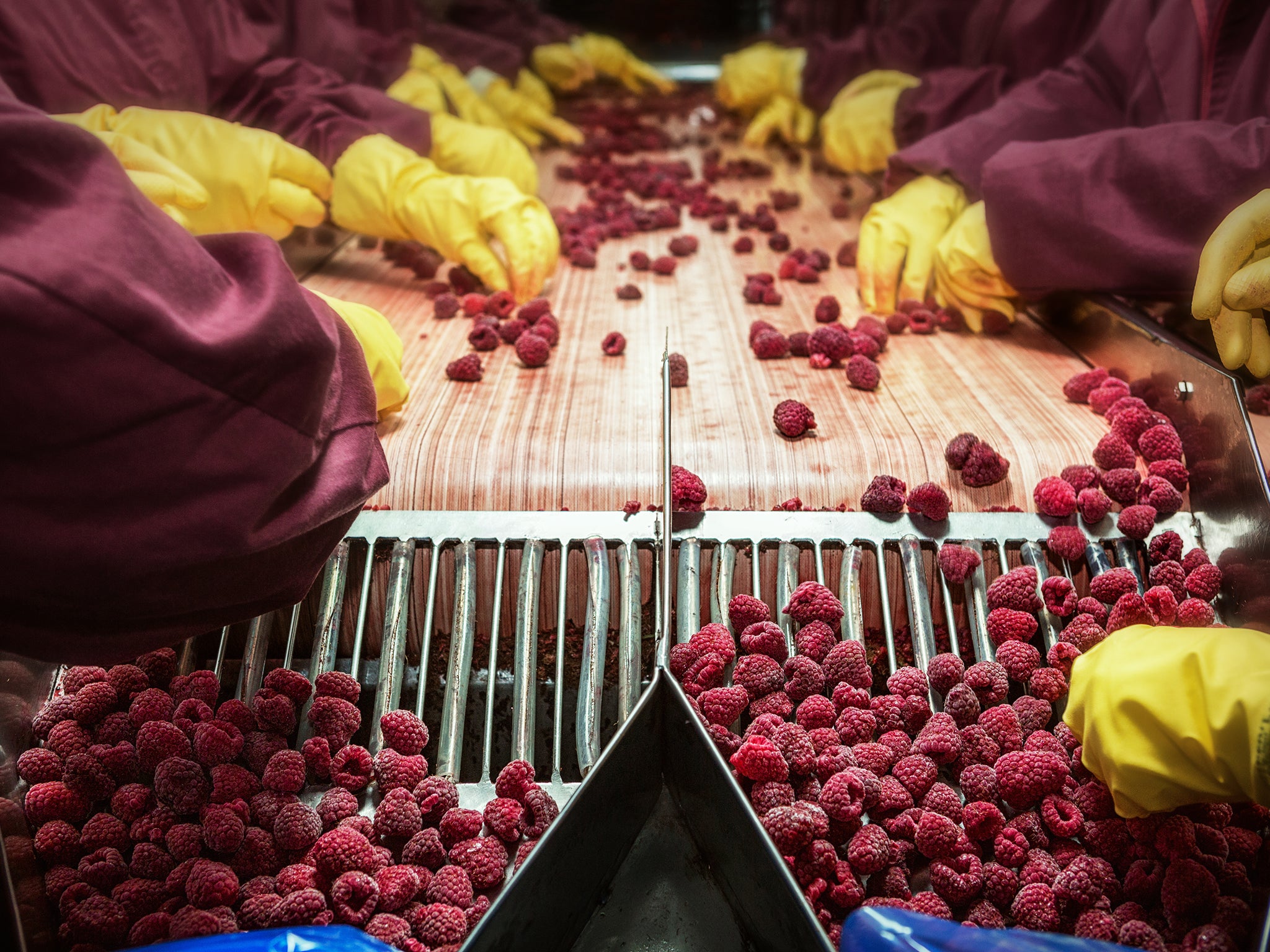How technology will help fight food fraud
Food fraud is a common problem that technologies such as blockchain and DNA fingerprinting can help to solve

Your support helps us to tell the story
From reproductive rights to climate change to Big Tech, The Independent is on the ground when the story is developing. Whether it's investigating the financials of Elon Musk's pro-Trump PAC or producing our latest documentary, 'The A Word', which shines a light on the American women fighting for reproductive rights, we know how important it is to parse out the facts from the messaging.
At such a critical moment in US history, we need reporters on the ground. Your donation allows us to keep sending journalists to speak to both sides of the story.
The Independent is trusted by Americans across the entire political spectrum. And unlike many other quality news outlets, we choose not to lock Americans out of our reporting and analysis with paywalls. We believe quality journalism should be available to everyone, paid for by those who can afford it.
Your support makes all the difference.Food fraud is everywhere. In the aftermath of the horsemeat scandal in Europe, and with cases reported around the world, including in Canada, awareness is high.
Dalhousie University recently released a study on food fraud and the results were surprising: A whopping 63 per cent of Canadians are generally concerned about food fraud. Worse still, more than 40 per cent of Canadians feel they have been victims of food fraud already. These are alarming results that can’t be ignored.
Food fraud can take many forms. It can include adulteration – substituting one ingredient with a much cheaper one – or misrepresentation, which may include selling a product as organic when it is not.
Canadian food fraud cases abound
Food categories that are more vulnerable to food fraud are fish, seafood, liquids, spices, fruits, vegetables and meat products. Canada has seen its share of cases in recent months, one of the most notable ones is Mucci Farms in southwestern Ontario, near the tip of Lake Erie. The company was fined $1.5m (£1.1m) for selling Mexican tomatoes as a product of Canada. Mucci Farms denies that the labelling was intentional and faults their computer system.
Other cases have emerged through whistleblowers trying to draw attention to food fraud. Cericola Farms, one of the largest poultry processors in the country, was charged with fraud last year over allegations of organic mislabelling.
The number of cases is adding up. The Canadian Food Inspection Agency has received over 40 complaints in 2016 and industry observers expect that number to increase in 2017.
Serious health and economic risks
Some may believe that food fraud is a victimless crime. This is not so. What is at stake is the entire food economy.
For any food business to grow and offer high-quality food products, it requires consumer trust. If trust is lost then everything the industry is trying to accomplish will become more challenging. Why would consumers pay more for a product they may deem fraudulent?
The majority of food companies are ethically sound, but you only need a few cases to damage the reputation of an entire industry.
Most importantly, the Dalhousie study suggests that consumers with allergies or intolerances to particular foods are likely to feel more vulnerable than other consumers when thinking of food fraud. Consequently, food fraud is as much a socioeconomic issue as it is one of public health.
Technology a partial solution
Grocers have made recent investments in blockchain technologies that provide a tool to detect products that may pose as counterfeit.
But these measures can only do so much. Companies can’t really report fraudulent rivals for fear of retaliation — food companies denouncing fraudulent cases are themselves accused of food fraud. They can’t win.
Regulators would have to sample-test everything, which would be operationally impractical and, frankly, impossible. Public regulators have been aware of the issue for quite some time but have struggled to find any solutions to address the issue.
A few provinces, including Ontario, have created provincewide committees on food integrity to work with industry in finding fraudulent cases. However, their work will take a while before we see anything new.
Exercise caution
Meanwhile, consumers should shop for food and visit restaurants with extreme prejudice. Consumers should look for consistencies in pricing and quality. If a food product is much cheaper at one outlet, perhaps the deal is too good to be true. Consumers should also ask pointed questions about procurement strategies to retailers and restaurant operators to make the supply chain more transparent to them.
But humans are humans and food fraud has been going on for more than 2,000 years. The first known reported cases go back to the Roman Empire when suspicions around adulterated wines and oils were prevalent. Today, however, we have technologies allowing us to detect fraudulent behaviour.
Companies and research centres from around the world are currently developing portable technologies that allow consumers themselves to validate the content of food labels. Imagine testing your own products at home to see if that apple is really from Ontario or that olive oil is really from Italy. The technology exists, but costs are prohibitive. Some of these devices can cost more than $200,000 (£151,240).
One day though, consumers empowered by these technologies will become the most powerful regulators the food industry can ever imagine. Knowing that consumers can ultimately test the integrity of any product, the entire food supply chain will need to be more disciplined and the rotten apples will need to go, no pun intended.
Over time, humans themselves may not get rid of food fraud but technology will.
Sylvain Charlebois is a professor in food distribution and policy at Dalhousie University. This article first appeared on The Conversation (theconversation.com)
Join our commenting forum
Join thought-provoking conversations, follow other Independent readers and see their replies
Comments